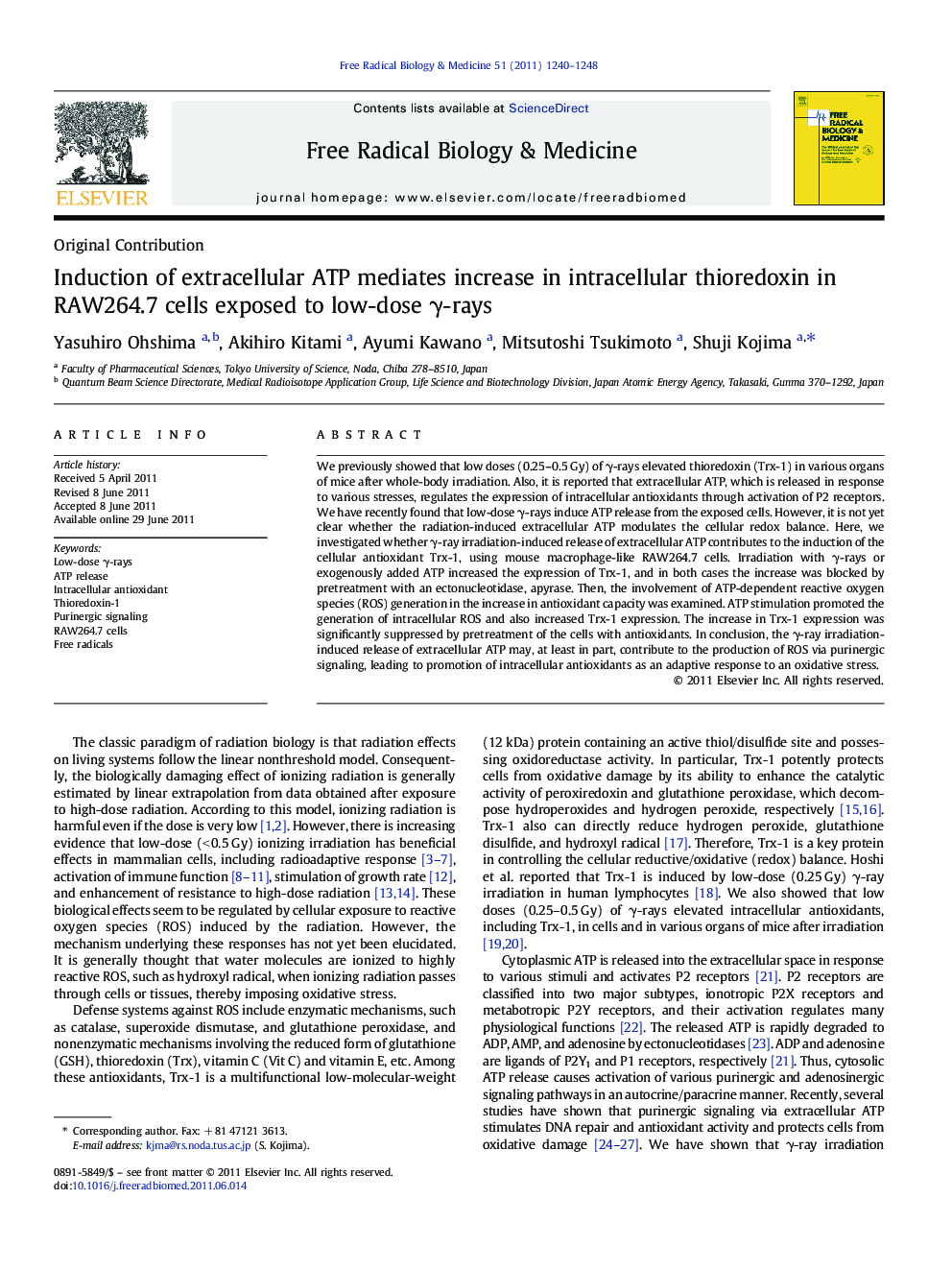| Article ID | Journal | Published Year | Pages | File Type |
|---|---|---|---|---|
| 1909153 | Free Radical Biology and Medicine | 2011 | 9 Pages |
We previously showed that low doses (0.25–0.5 Gy) of γ-rays elevated thioredoxin (Trx-1) in various organs of mice after whole-body irradiation. Also, it is reported that extracellular ATP, which is released in response to various stresses, regulates the expression of intracellular antioxidants through activation of P2 receptors. We have recently found that low-dose γ-rays induce ATP release from the exposed cells. However, it is not yet clear whether the radiation-induced extracellular ATP modulates the cellular redox balance. Here, we investigated whether γ-ray irradiation-induced release of extracellular ATP contributes to the induction of the cellular antioxidant Trx-1, using mouse macrophage-like RAW264.7 cells. Irradiation with γ-rays or exogenously added ATP increased the expression of Trx-1, and in both cases the increase was blocked by pretreatment with an ectonucleotidase, apyrase. Then, the involvement of ATP-dependent reactive oxygen species (ROS) generation in the increase in antioxidant capacity was examined. ATP stimulation promoted the generation of intracellular ROS and also increased Trx-1 expression. The increase in Trx-1 expression was significantly suppressed by pretreatment of the cells with antioxidants. In conclusion, the γ-ray irradiation-induced release of extracellular ATP may, at least in part, contribute to the production of ROS via purinergic signaling, leading to promotion of intracellular antioxidants as an adaptive response to an oxidative stress.
